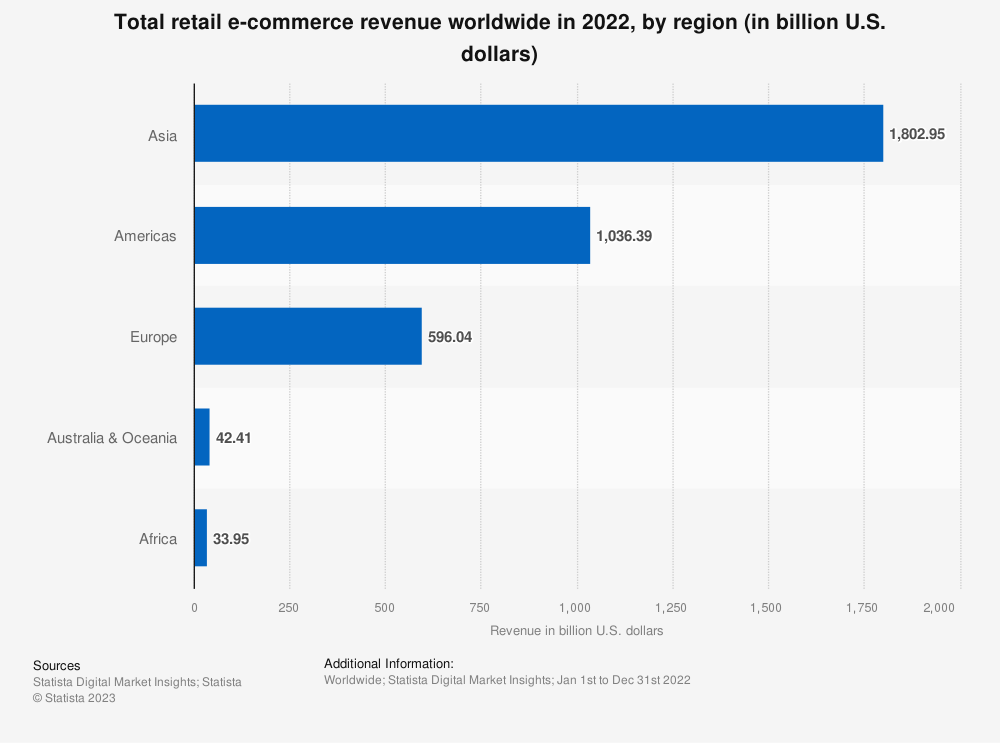Ecommerce has transformed the way we buy and sell products or services, reshaping the retail landscape and creating new opportunities for businesses. With the advent of online shopping, consumers can browse, compare, and purchase items from the comfort of their homes, revolutionizing the traditional brick and mortar store experience. In this article, we will explore the various aspects of ecommerce, from its influence on digital products to the thriving business models that drive its success.
The Rise of Online Shopping:
Online shopping has become increasingly popular because it’s convenient and easy to use. With just a few clicks, you can find a wide range of products or services on ecommerce websites. This has not only given customers more choices but also allowed businesses to reach customers all over the world. The competition among online retailers has led to better innovations and experiences for shoppers.
One reason for the rise of online shopping is the convenience it offers. Instead of rushing to physical stores, you can now shop from the comfort of your home at any time. Online stores are always open, so you can browse and buy whenever it suits you.
Another factor is the accessibility of online shopping. Thanks to the internet, anyone with a connected device can access ecommerce platforms and discover a variety of products. This has made it easier for people from different places to connect with businesses and find unique items.
The competition among online retailers has driven improvements in the shopping experience. They are constantly working to provide better customer service and make the process smoother. Online stores invest in user-friendly websites and easy checkout processes to make shopping enjoyable.
Online shopping has also affected traditional brick-and-mortar stores. While physical stores are still important, online shopping offers convenience and flexibility that traditional stores struggle to match. To stay relevant, many physical stores have started selling online too.
For businesses, online shopping has opened up new opportunities to sell directly to customers. Setting up an ecommerce website is now more accessible, allowing small businesses to compete with bigger ones. This has created a diverse marketplace where businesses can showcase their unique products.
The Power of Digital Products:
Digital products have become a game-changer in the world of ecommerce, benefiting both businesses and consumers alike. These products, ranging from e-books and online courses to software and entertainment media, have revolutionized the way we access and distribute valuable content. Let’s explore the power of digital products and how they have transformed the ecommerce landscape.
One of the greatest advantages of digital products is their ease of distribution. Unlike physical products that require shipping and handling, digital products can be instantly downloaded or accessed online. This means that customers from around the world can enjoy the benefits of these products without any delays or additional costs. Whether it’s an e-book that provides valuable knowledge or a software application that enhances productivity, digital products eliminate the barriers of physical distance and shipping logistics.
The scalability of digital products is another remarkable feature that benefits businesses. Unlike physical goods that require manufacturing or production, digital products can be replicated and delivered effortlessly. This scalability allows businesses to cater to an unlimited number of customers without worrying about inventory or production limitations. Whether a business sells one digital product or a thousand, the process remains streamlined and efficient.
Furthermore, digital products offer a cost-effective solution for businesses. Unlike traditional physical products that involve manufacturing, warehousing, and distribution costs, digital products can be created once and sold repeatedly without incurring additional expenses. This means that businesses can generate revenue from their digital products without the need for continuous production or restocking. With the potential for high-profit margins, digital products have become a lucrative avenue for businesses to explore.
From a consumer’s perspective, digital products offer convenience and instant gratification. With just a few clicks, customers can access their desired digital products and begin benefiting from them immediately. Whether it’s a self-paced online course that helps acquire new skills or an entertaining e-book that provides hours of enjoyment, digital products offer flexibility and accessibility. Consumers no longer have to wait for physical shipments or worry about product availability. Everything is just a few clicks away.
The rise of digital products has also opened up new markets and opportunities for businesses. With the internet connecting people from all corners of the globe, businesses can now tap into a global customer base. Digital products transcend geographical boundaries, allowing businesses to reach customers in different countries without the need for physical stores or local distribution networks. This global reach has unlocked immense potential for businesses to expand their customer base and generate revenue from untapped markets.
Business-to-Consumer (B2C) Dynamics:
When it comes to online shopping, the Business-to-Consumer (B2C) model plays a vital role. In this dynamic, businesses directly sell products or services to individual consumers, creating a seamless transactional experience. Let’s delve into the world of B2C ecommerce and explore its key dynamics.
Ecommerce websites have emerged as the go-to platform for B2C transactions. These websites provide a convenient and user-friendly interface where consumers can explore a wide range of products and services. With just a few clicks, shoppers can browse through catalogs, read product descriptions, and compare prices. The digital marketplace offers a personalized shopping experience, allowing consumers to find exactly what they need with ease.
Security is of utmost importance in B2C ecommerce, especially when it comes to online transactions. Ecommerce websites ensure secure payment gateways to protect sensitive information such as credit card details. This instills confidence in consumers, encouraging them to make purchases without concerns about their privacy or data security.
Efficient order fulfillment is another key aspect of B2C ecommerce. Online retailers strive to provide prompt and reliable delivery services, ensuring that customers receive their orders in a timely manner. From reliable shipping partners to effective inventory management, businesses work diligently to streamline the order fulfillment process, offering a seamless experience for consumers.
Data analytics and customer insights play a significant role in B2C ecommerce. Online retailers leverage these tools to gain a deeper understanding of their customers’ preferences, shopping habits, and buying behavior. This valuable information allows businesses to tailor their marketing campaigns and promotions to target specific customer segments. By delivering personalized offers and recommendations, businesses enhance customer satisfaction and drive repeat purchases, fostering long-term loyalty.
In the ever-evolving landscape of B2C ecommerce, customer experience takes center stage. Online retailers focus on creating user-friendly interfaces, intuitive navigation, and seamless transactions. They invest in optimizing their websites for mobile devices, recognizing the growing importance of mobile commerce. By providing a seamless and enjoyable shopping experience, businesses strive to build strong connections with their customers and cultivate brand loyalty.
Business-to-Business (B2B) Advancements:
Ecommerce has also transformed the B2B landscape, revolutionizing the way businesses engage in buying and selling activities. B2B ecommerce platforms enable seamless transactions between businesses, streamlining procurement processes, and reducing costs. The convenience of online ordering, bulk purchases, and customized pricing models have facilitated efficient business interactions, leading to increased productivity and collaboration.
Harnessing Social Media for Ecommerce Success:
Social media platforms have become powerful tools for promoting and selling products online. Businesses can leverage social media marketing to reach a broader audience, engage with customers, and drive traffic to their ecommerce websites. The ability to showcase products or services through visually appealing content, influencer partnerships, and targeted advertising campaigns has proven to be a game-changer for online businesses.
The Business Model Behind Ecommerce:
Successful ecommerce ventures rely on robust business models that optimize revenue generation and customer satisfaction. Whether it’s the dropshipping model, subscription-based services, or the traditional inventory-based approach, businesses must strategically align their operations to maximize profitability. Continuous adaptation and innovation are crucial to staying ahead in the dynamic ecommerce landscape.
The Future of Ecommerce:
As technology continues to advance at a rapid pace, the future of ecommerce holds tremendous potential. Innovations such as augmented reality, artificial intelligence, and voice commerce are revolutionizing the way consumers interact with online platforms. Let’s explore how these technologies are shaping the future of ecommerce and transforming the customer experience.
One exciting development in the ecommerce landscape is augmented reality (AR). This technology enables consumers to visualize products in a virtual environment, providing a realistic and immersive shopping experience. With AR, shoppers can try on virtual clothing, place virtual furniture in their homes, or even see how cosmetics will look on their faces. By eliminating the guesswork and uncertainty associated with online shopping, AR enhances customer confidence and reduces the likelihood of returns, resulting in higher customer satisfaction.
Artificial intelligence (AI) is another game-changing technology in the world of ecommerce. AI-powered algorithms analyze vast amounts of data to understand consumer preferences and behavior, allowing businesses to deliver personalized recommendations and offers. By leveraging AI, ecommerce platforms can create tailored shopping experiences that cater to individual needs and preferences. AI-powered chatbots and virtual assistants also provide instant customer support, answering queries and guiding shoppers through their purchase journey. This automation and personalization enhance customer satisfaction and streamline the shopping process.

Voice commerce is another emerging trend that is set to reshape the ecommerce landscape. With the rise of voice-enabled devices such as smart speakers and virtual assistants, consumers can now make purchases using voice commands. Voice commerce offers convenience and hands-free interaction, allowing shoppers to place orders or add items to their shopping carts with ease. As voice recognition technology improves, the accuracy and reliability of voice commerce will continue to enhance, providing a seamless and intuitive shopping experience.
The integration of these technologies holds immense promise for the future of ecommerce. By combining augmented reality, artificial intelligence, and voice commerce, businesses can create truly immersive and personalized shopping journeys. Imagine browsing a virtual store, where AI-powered recommendations cater specifically to your tastes, and interacting with products using natural language through voice commands. This convergence of technologies will blur the lines between physical and online shopping, delivering an unparalleled level of convenience and engagement.
Moreover, these advancements in technology will not only benefit consumers but also provide new opportunities for businesses. By harnessing the power of AR, AI, and voice commerce, businesses can gain deeper insights into customer preferences and behavior, optimize their marketing strategies, and drive sales. They can deliver targeted advertisements, offer personalized promotions, and enhance customer loyalty through customized experiences. The integration of these technologies will enable businesses to stay competitive in the ever-evolving ecommerce landscape and meet the growing demands of tech-savvy consumers.






